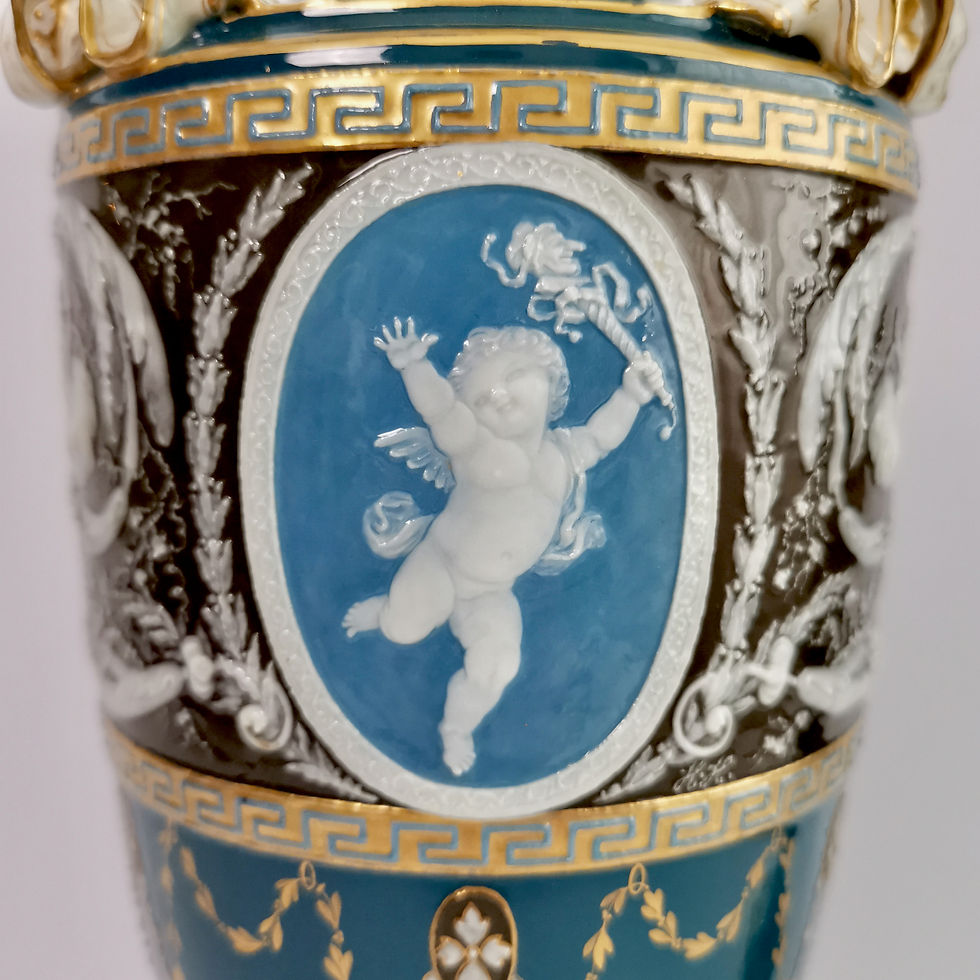A layered story
- willa

- Apr 2, 2021
- 3 min read
This weekend is Easter, and after and exceptionally long and dark winter the spring has never been so welcome! 🌷 I know many of you are still in lockdown, or are just returning to lockdown... here in England we are just enjoying a slight relaxation after a winter of strict lockdown. But Easter will be special no matter what: we have some time off to admire the new flowers outside, feel the first rays of the sun on our face when we go out, and we can make things wonderful for our loved ones at home. So today I have something special to show you!
Victorian vases
Vases were very popular in the Victorian era. People had a new insight that where we live has a huge influence on who we become, so they started to pay great attention to their interior design. If they could afford it, they would surround themselves with beautiful "objects d'art"; often vases, urns or figures. Minton was one Staffordshire porcelain factory that understood this need and created the most refined examples. Today I am showing a sublime and rare pair of vases (sometimes called urns) made by Minton in the 1880s. The vases have stunning pâte-sur-pâte decorations. You can see in the last picture in the slider that they are signed with the initials H.H., for Henry (better known as Harry) Hollins, who worked with the famous Louis Solon.
Pâte-sur-pâte
Pâte-sur-pâte is French for "layer upon layer". It is a technique by which layers (pâtes) of porcelain slip are laid on top of a parian porcelain body, creating extraordinarily finely sculpted forms. The technique came to Minton via Louis Solon, a French refugee who had learned the skill at the famous Sèvres factory. Sèvres worked with a hard paste body, and when Minton had developed their famous parian body, Solon realised that he could greatly improve on the technique using the very excellent English porcelain body. He brought Minton great fame with his creations and trained several others in this very difficult technique, among them Alboin Birks and Harry Hollins, who joined Minton in 1871 and created these vases.
These vases would probably not have been literally used as vases - they are not very practical for flowers. They would have been placed as decorative pieces on a wonderfully sculpted mantlepiece or a beautiful side board. They would do well with another piece of Minton porcelain between them, which would make it a "garniture". And of course this colour, which was called "peacock blue", is a wonderfully mysterious colour that goes well with just about any interior design.
The Story of British Porcelain
Last week I made you aware of my interview in Homes & Antiques - this week you can read the first of my monthly column writing about British porcelain. These features are not available online yet so you'll have to buy a copy, or why not subscribe to this wonderful magazine that has recently taken on several interesting new writers. Have a read and keep following me if you want to find out more about the story of British porcelain!
Where to find things
This time of spring and Easter is a perfect time of year to set a beautiful table, whether you are in lockdown or not. So I have uploaded many new items to my shop; you can find them here. If you want to see more Minton you can see some wonderful pieces here. And if you always want to know about the latest additions, follow me on Instagram... I post pictures and a story every single day.
Wish List ❤️
Don't forget, you can now create your own profile on the site and keep a wish list. Click on the Log In icon at the top right of each page.
Happy weekend, and Happy Easter! 🐣🌸🌱
This week's new treasures:















































































Comments